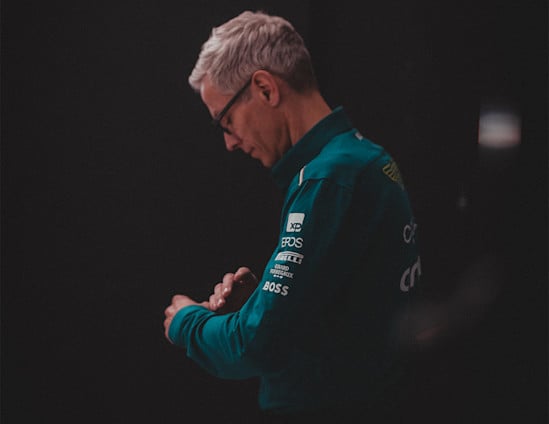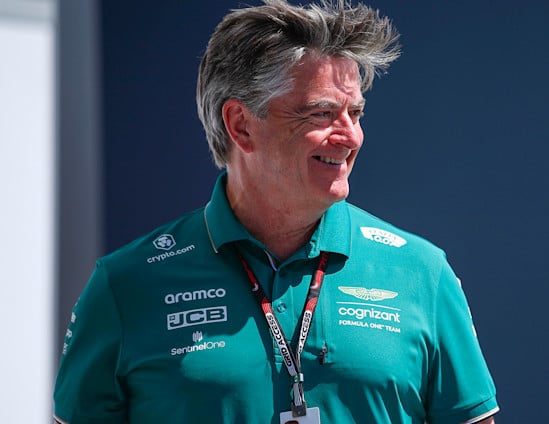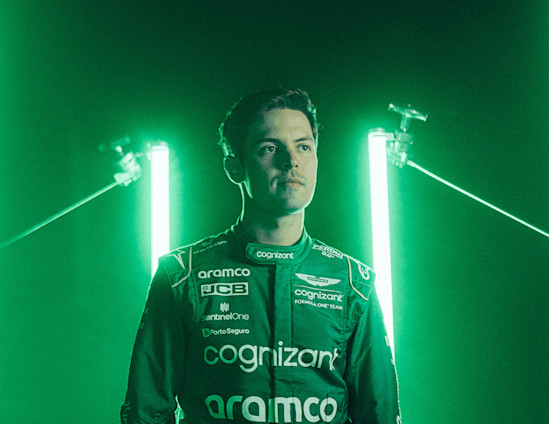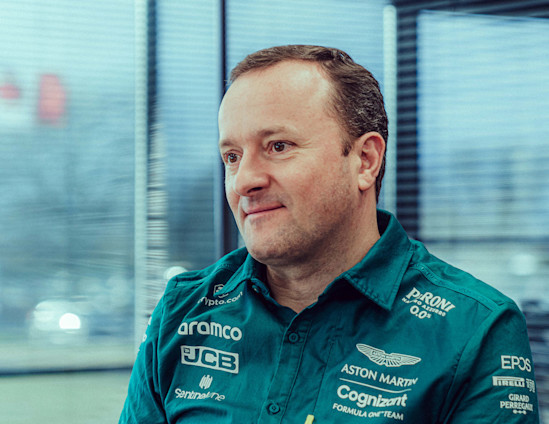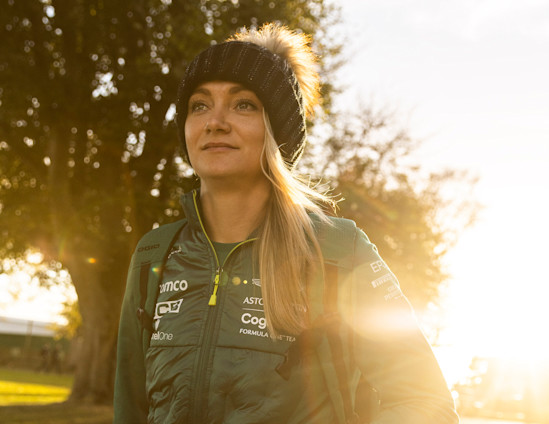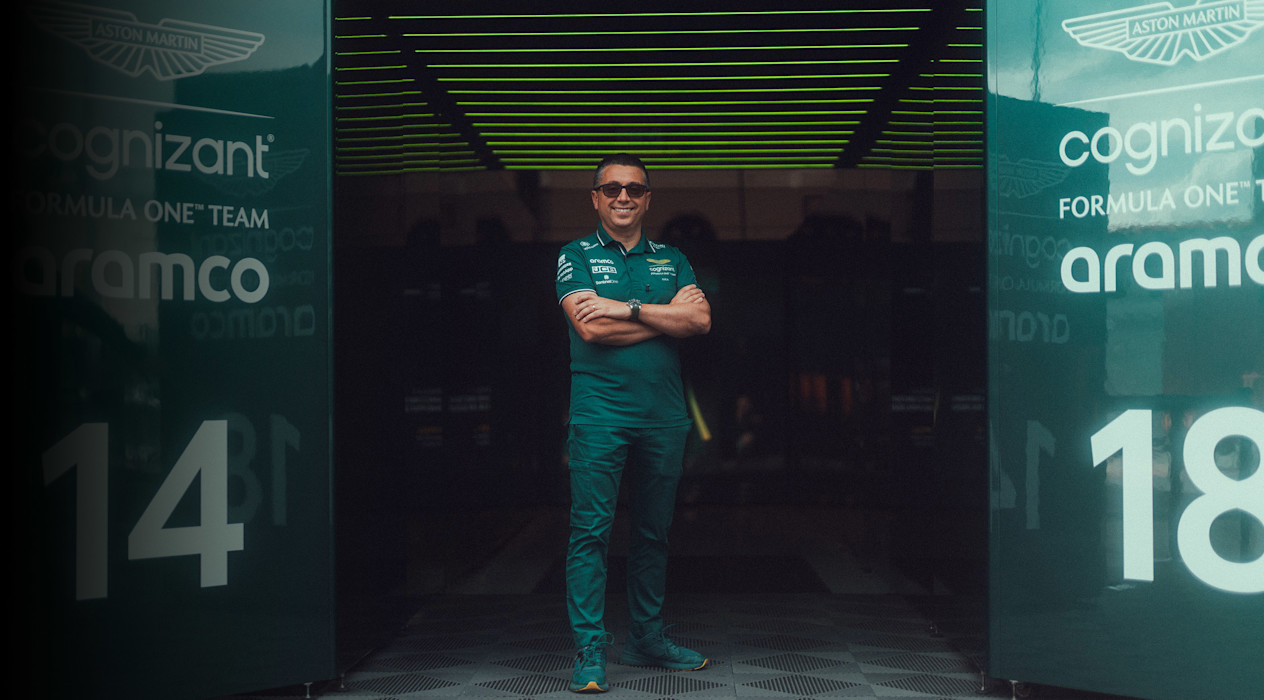
Engineering Director Luca Furbatto lives in the future but works in the present. We reckon he's got a crystal ball, but he says it's actually more like playing Tetris…
A question: what's most important to Aston Martin Aramco Cognizant Formula One® Team right now? Is it the fight to the finish in 2023? Is it hitting the ground running with our 2024 challenger? Do these pale into insignificance beside the need to be ready for 2026 and our works power unit partnership with Honda? The short answer is that there is no right answer: our focus, if you will forgive the insult to grammar, has to be everywhere.
Our team trackside and at AMR Technology Campus continue to push hard to extract performance out of the AMR23, while much of the design team now have their heads firmly focused on our 2024 challenger. Beyond that, we have other groups working on the longer term, thinking about our gearbox, interpreting the 2026 regulation reboot, collaborating with Honda. All of this falls under the aegis of Engineering Director Luca Furbatto.
With a distinguished career at BAR, McLaren, Toro Rosso, Sauber and now Aston Martin on his CV, Luca is one of those people who excels at spinning plates. He isn't working on 2026 to the exclusion of everything else – but it does take up a sizeable portion of his time.
In the latest instalment of our UNDERCUT interview series, which asks the questions you want answered, Luca puts down his crystal ball for a moment to provide an unfiltered insight into the longer-term future of the team and the steps we are taking to become World Championship contenders.
Luca, before we get started, what does an Engineering Director actually do and what does a typical day look like for you?
It's a little complicated to explain because the definition of an Engineering Director changes from team to team. At the AMF1 Team, I manage our relationship with the FIA from a Technical Regulations point of view and oversee the execution of a number of projects. I’m also very involved in defining internal standard and operational processes.
I'm at work typically from 08:00 and the day goes very quickly! It involves bouncing between different projects and multitasking: on a typical day I could be coordinating the work on our new gearbox programme, chair a meeting about the latest Valvoline lubricants or discuss internal process improvements. The next day I could be in conference calls with the FIA on future regulations and looking into reliability fixes for the current season. It can be quite challenging and a little bit stressful from time to time but I like it. Coordinating several different projects is a bit like playing Tetris: everything needs to fall into place.

It would be very easy to let things slip your mind, and then suddenly it's too late.
What is the toughest aspect of working in this way?
When you've got multiple concurrent projects, keeping a timeline on exactly where you are in each of these projects is important. It would be very easy to let things slip your mind, and then suddenly it's too late. Post Covid-19, lead times are longer on certain items like sensors or exotic materials, so timing is of the essence.
You mentioned our new gearbox programme. Is that something that is getting a lot of your attention right now?
The gearbox project is a really good example. Currently, we are purchasing the gearbox and the rear suspension from Mercedes. In 2026 we will reach works team status with Honda: much will change and we will need to carry out a number of new projects for the car.
The last time this team made its own gearbox was 2008 and things have moved on a bit since then! We are recruiting and building our competencies in this area – and we've already brought in a number of very talented designers. The group working on this project is still very much growing, but the work being done with a mix of internal resources and external contractors is moving forward quickly.
2026 might seem like a long way in the future, but in engineering terms, it's really just around the corner.
Should the torque-carrying components of gearboxes be standardised in F1?
We're pushing for a standardised gearbox because it makes financial sense in a cost cap environment but we are facing stiff opposition. Realistically it’s not going to happen any time soon. It's possible the FIA may reach something of a middle ground, with the design becoming a little more prescribed, lighter and simplified.
I suspect we will look back in a few years and conclude that we lost a golden opportunity to reduce costs within the transmission area. It is something that the fans cannot see, the technology is the same between all teams and brings very little performance. The money saved on transmission could be repurposed towards aero development, which is currently the only way to compress the grid and improve the show.
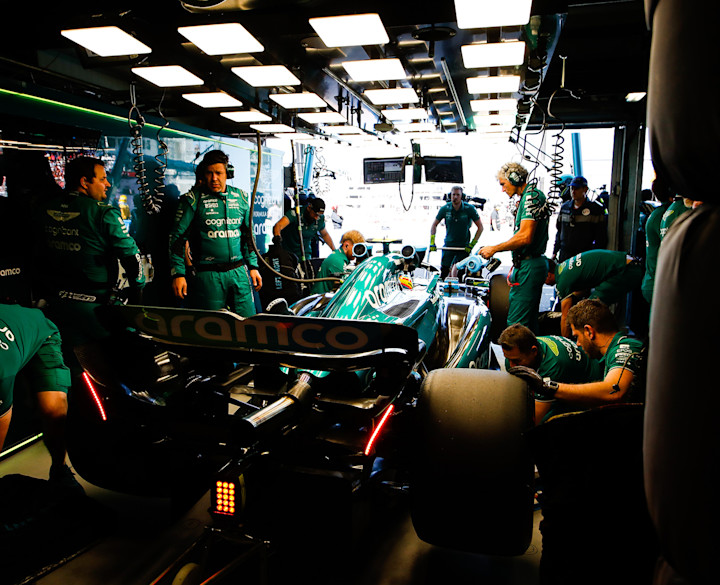
By 2026, with a power unit from Honda and our own gearbox, we’ll have control of our own destiny. If we want to take the next step towards winning, this is what we have to do.
Do you need to be a works team to win the World Championship?
In the past it has not been the case but since the introduction of hybrid power units only works teams have won the F1 World Championship. We're very happy with what we receive from Mercedes, however in terms of car architecture we're partially led by Mercedes F1 Team and Mercedes High Performance Powertrains. We receive the dimensions of the power unit, gearbox and rear end, so we have to adapt the design of our car around what they provide to us.
By 2026, with a power unit from Honda and our own gearbox, we'll have control of our own destiny. If we want to take the next step towards winning, this is what we have to do.
How is Honda's integration with the team progressing?
It's been extremely exciting since the announcement last May. We started the first face-to-face meetings with Honda straight after the announcement and are having regular catch-ups. As you can appreciate, for them it is still early days, but the 2026 engine is developing rapidly; we're exchanging ideas and they're responding incredibly positively. As we move forward, the cooperation will accelerate because the deadlines are tight and, in some cases, cannot move.
Increased electrical energy, active aero… They're still to be finalised, but has F1 got the 2026 regulations right?
All new regulations are exciting and present a huge opportunity. As the regulations currently stand, teams will have to develop a car that is very aero efficient to compensate for the new power unit. It's a challenge, but every team is in the same situation. It's up to us to do a better job than the others.
With the regulation overhaul in 2026 and the team still currently in a building phase, does 2026 represent our best opportunity to win the World Championship?
2026 is three seasons away. We want to do well in 2024 and 2025. We want to do well in the remaining races this season and improve our position in the championship. I think 2026 is very exciting, but it would be wrong to put all our eggs in one basket.
These goals are not mutually exclusive: we have to improve as an organisation in many different areas and the learning we do in the next two seasons will be vitally important to be ready in 2026.
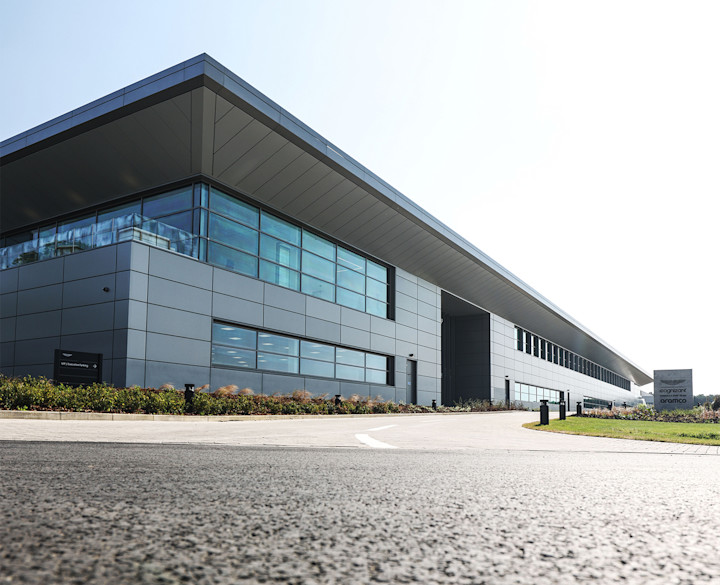
We'll start to see the full potential of the new campus by the beginning of 2025: we'll have our new gearbox dynos fully operational, and the new wind tunnel will be ready in the second half of next year.
How does the new AMR Technology Campus fit into this process, and when will we reap the full benefits of our new home?
It's a big part of everything we hope to achieve. When I joined the team the new campus didn't even exist, so I've been able to have an input into shaping our future facilities. I recall when we were looking at the layout of the R&D testing areas and various rigs. We spent a lot of our time looking at the building layout, the equipment specifications in great detail, and even the type of foundations. The first phase of the new campus is complete and it's an incredible place to work and there is more to come.
I believe we'll start to see the full potential of the new campus by the beginning of 2025: we'll have our new gearbox dynos fully operational, and the new wind tunnel will be ready in the second half of next year. All in all, it'll be a game-changer.
What does having the wind tunnel on-site mean for the team? Right now, we're only a few kilometres away from the one we use at Brackley.
It's going to be a fantastic tool for us. Firstly, it's being constructed to extremely high specifications.
Secondly, it is our own tunnel and we will be able to run normal weekly shifts, with a little bit less compression on the running time compared to the current arrangement. It will be very beneficial.
Finally, there is also a benefit of simply having it on-site. It will increase the amount social interaction that drives improvement and efficiency in whatever we are designing and engineering.
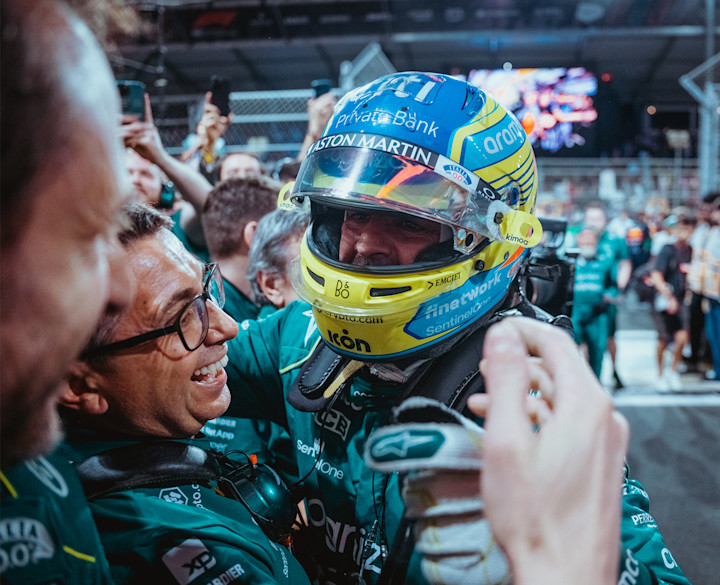
Our performance jump this year has been positive. We were expecting to make a good step and I think we outperformed ourselves a little bit at the start of the season.
The team is evolving at a rapid rate. How does it differ from the one you joined a couple of years ago?
Like many people in the team, I'm a relatively recent recruit. When Lawrence Stroll arrived, he made significant financial resources available to the team – but the team had to grow fast to achieve Lawrence's vision.
When you're small, you can rely on a few key individuals to deliver and operate the cars. When you grow to the level we are now – with hundreds of people – you need systems that work for you to deliver efficiency gains.
That transformation has happened and we're still making adjustments. It's going to be a phase of continuous improvements for the foreseeable future. I think the team has changed significantly in the last 18 months and we are starting to see the benefits of this transformation.
Where do you think the team is right now?
Our performance jump this year has been positive. We were expecting to make a good step and I think we outperformed ourselves a little bit at the start of the season. What we're seeing now is the dynamics of the grid changing rapidly, almost race by race. The grid is very close, you can slide down the order very quickly.
With stability in the regulations, the 2024 cars are going to be an evolution of 2023, which means the two projects are heavily intertwined. You'll see parts developed for the car in the final part of this season that will benefit 2024 and things being developed for 2024 perhaps brought forward to benefit 2023.
You've been in the sport for more than two decades. You've got a wealth of experience. What makes a great engineer?
Understanding the car in its entirety is important. You don’t need to be a super-expert in every area but having that breadth of understanding across the car is really advantageous.
To succeed in F1, you need to be very dedicated and constantly find ways to improve in every area. You've got to move outside of your comfort zone or others will find improvements before you. This process never stops. Even when you reach the top, when you're winning championships, you have to keep pushing.
Does it ever get tiring, Luca?
If you're passionate about what you do, the relentless drive to do better comes naturally. The highest level of engineering is what drives me.
Amplify your fan experience
From exclusive collabs to once-in-a-lifetime prizes, I / AM DROPS is a new series of unique and ultra-limited moments and fan experiences.
Sign up for I / AM or sign in to unlock.



